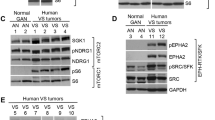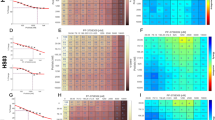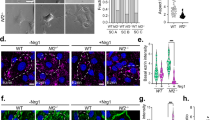Abstract
TAM family receptor tyrosine kinases comprising Tyro3 (Sky), Axl, and Mer are overexpressed in some cancers, correlate with multidrug resistance and contribute to tumourigenesis by regulating invasion, angiogenesis, cell survival and tumour growth. Mutations in the gene coding for a tumour suppressor merlin cause development of multiple tumours of the nervous system such as schwannomas, meningiomas and ependymomas occurring spontaneously or as part of a hereditary disease neurofibromatosis type 2. The benign character of merlin-deficient tumours makes them less responsive to chemotherapy. We previously showed that, amongst other growth factor receptors, TAM family receptors (Tyro3, Axl and Mer) are significantly overexpressed in schwannoma tissues. As Axl is negatively regulated by merlin and positively regulated by E3 ubiquitin ligase CRL4DCAF1, previously shown to be a key regulator in schwannoma growth we hypothesized that Axl is a good target to study in merlin-deficient tumours. Moreover, Axl positively regulates the oncogene Yes-associated protein, which is known to be under merlin regulation in schwannoma and is involved in increased proliferation of merlin-deficient meningioma and mesothelioma. Here, we demonstrated strong overexpression and activation of Axl receptor as well as its ligand Gas6 in human schwannoma primary cells compared to normal Schwann cells. We show that Gas6 is mitogenic and increases schwannoma cell-matrix adhesion and survival acting via Axl in schwannoma cells. Stimulation of the Gas6/Axl signalling pathway recruits Src, focal adhesion kinase (FAK) and NFκB. We showed that NFκB mediates Gas6/Axl-mediated overexpression of survivin, cyclin D1 and FAK, leading to enhanced survival, cell-matrix adhesion and proliferation of schwannoma. We conclude that Axl/FAK/Src/NFκB pathway is relevant in merlin-deficient tumours and is a potential therapeutic target for schwannoma and other merlin-deficient tumours.
This is a preview of subscription content, access via your institution
Access options
Subscribe to this journal
Receive 50 print issues and online access
$259.00 per year
only $5.18 per issue
Buy this article
- Purchase on Springer Link
- Instant access to full article PDF
Prices may be subject to local taxes which are calculated during checkout







Similar content being viewed by others
References
Burchert A, Attar EC, McCloskey P, Fridell YW, Liu ET . Determinants for transformation induced by the Axl receptor tyrosine kinase. Oncogene 1998; 16: 3177–3187.
Taylor IC, Roy S, Varmus HE . Overexpression of the Sky receptor tyrosine kinase at the cell surface or in the cytoplasm results in ligand-independent activation. Oncogene 1995; 11: 2619–2626.
Hafizi S, Dahlback B . Signalling and functional diversity within the Axl subfamily of receptor tyrosine kinases. Cytokine Growth Factor Rev 2006; 17: 295–304.
Valverde P . Effects of Gas6 and hydrogen peroxide in Axl ubiquitination and downregulation. Biochem Biophys Res Commun 2005; 333: 180–185.
Linger RM, Keating AK, Earp HS, Graham DK . TAM receptor tyrosine kinases: biologic functions, signaling, and potential therapeutic targeting in human cancer. Adv Cancer Res 2008; 100: 35–83.
Wu CW, Li AF, Chi CW, Lai CH, Huang CL, Lo SS et al. Clinical significance of AXL kinase family in gastric cancer. Anticancer Res 2002; 22: 1071–1078.
Zhao Y, Sun X, Jiang L, Yang F, Zhang Z, Jia L . Differential expression of Axl and correlation with invasion and multidrug resistance in cancer cells. Cancer Invest 2012; 30: 287–294.
Sayan AE, Stanford R, Vickery R, Grigorenko E, Diesch J, Kulbicki K et al. Fra-1 controls motility of bladder cancer cells via transcriptional upregulation of the receptor tyrosine kinase AXL. Oncogene 2012; 31: 1493–1503.
Ou WB, Corson JM, Flynn DL, Lu WP, Wise SC, Bueno R et al. AXL regulates mesothelioma proliferation and invasiveness. Oncogene 2011; 30: 1643–1652.
Ammoun S, Flaiz C, Ristic N, Schuldt J, Hanemann CO . Dissecting and targeting the growth factor-dependent and growth factor-independent extracellular signal-regulated kinase pathway in human schwannoma. Cancer Res 2008; 68: 5236–5245.
Ammoun S, Cunliffe CH, Allen JC, Chiriboga L, Giancotti FG, Zagzag D et al. ErbB/HER receptor activation and preclinical efficacy of lapatinib in vestibular schwannoma. Neuro Oncol 2010; 12: 834–843.
Ammoun S, Schmid MC, Zhou L, Ristic N, Ercolano E, Hilton DA et al. Insulin-like growth factor-binding protein-1 (IGFBP-1) regulates human schwannoma proliferation, adhesion and survival. Oncogene 2011; 31: 1710–1722.
Zhou L, Ercolano E, Ammoun S, Schmid MC, Barczyk MA, Hanemann CO . Merlin-deficient human tumors show loss of contact inhibition and activation of Wnt/beta-catenin signaling linked to the PDGFR/Src and Rac/PAK pathways. Neoplasia 2011; 13: 1101–1112.
Rosenbaum C, Kluwe L, Mautner VF, Friedrich RE, Mueller HW, Hanemann CO . Isolation and characterization of Schwann cells from neurofibromatosis type 2 patients. Neurobiol Dis 1998; 5: 55–64.
Rosenbaum C, Kamleiter M, Grafe P, Kluwe L, Mautner V, Muller HW et al. Enhanced proliferation and potassium conductance of Schwann cells isolated from NF2 schwannomas can be reduced by quinidine. Neurobiol Dis 2000; 7: 483–491.
Ammoun S, Schmid MC, Ristic N, Zhou L, Hilton D, Ercolano E et al. The role of insulin-like growth factors signaling in merlin-deficient human schwannomas. Glia 2012; 60: 1721–1733.
Utermark T, Kaempchen K, Hanemann CO . Pathological adhesion of primary human schwannoma cells is dependent on altered expression of integrins. Brain Pathol 2003; 13: 352–363.
Wickremesekera A, Hovens CM, Kaye AH . Expression of ErbB-1 and 2 in vestibular schwannomas. J Clin Neurosci 2007; 14: 1199–1206.
Li W, You L, Cooper J, Schiavon G, Pepe-Caprio A, Zhou L et al. Merlin/NF2 suppresses tumorigenesis by inhibiting the E3 ubiquitin ligase CRL4(DCAF1) in the nucleus. Cell 2010; 140: 477–490.
Yi C, Kissil JL . Merlin in organ size control and tumorigenesis: Hippo versus EGFR? Genes Dev 2010; 24: 1673–1679.
Li R, Chen J, Hammonds G, Phillips H, Armanini M, Wood P et al. Identification of Gas6 as a growth factor for human Schwann cells. J Neurosci 1996; 16: 2012–2019.
Utermark T, Kaempchen K, Antoniadis G, Hanemann CO . Reduced apoptosis rates in human schwannomas. Brain Pathol 2005; 15: 17–22.
Kaempchen K, Mielke K, Utermark T, Langmesser S, Hanemann CO . Upregulation of the Rac1/JNK signaling pathway in primary human schwannoma cells. Hum Mol Genet 2003; 12: 1211–1221.
Hilton DA, Ristic N, Hanemann CO . Activation of ERK, AKT and JNK signalling pathways in human schwannomas in situ. Histopathology 2009; 55: 744–749.
Ammoun S, Ristic N, Matthies C, Hilton DA, Hanemann CO . Targeting ERK1/2 activation and proliferation in human primary schwannoma cells with MEK1/2 inhibitor AZD6244. Neurobiol Dis 2010; 37: 141–146.
Ammoun S, Hanemann CO . Emerging therapeutic targets in schwannomas and other merlin-deficient tumors. Nat Rev Neurol 2011; 7: 392–399.
Ammoun S, Schmid MC, Triner J, Manley P, Hanemann CO . Nilotinib alone or in combination with selumetinib is a drug candidate for neurofibromatosis type 2. Neuro Oncol 2011; 13: 759–766.
Demarchi F, Verardo R, Varnum B, Brancolini C, Schneider C . Gas6 anti-apoptotic signaling requires NF-kappa B activation. J Biol Chem 2001; 276: 31738–31744.
Liu W, Bloom DA, Cance WG, Kurenova EV, Golubovskaya VM, Hochwald SN . FAK and IGF-IR interact to provide survival signals in human pancreatic adenocarcinoma cells. Carcinogenesis 2008; 29: 1096–1107.
Boyle K, Azari MF, Cheema SS, Petratos S . TNFalpha mediates Schwann cell death by upregulating p75NTR expression without sustained activation of NFkappaB. Neurobiol Dis 2005; 20: 412–427.
Klein EA, Yang C, Kazanietz MG, Assoian RK . NFkappaB-independent signaling to the cyclin D1 gene by Rac. Cell Cycle 2007; 6: 1115–1121.
Cooper J, Li W, You L, Schiavon G, Pepe-Caprio A, Zhou L et al. Merlin/NF2 functions upstream of the nuclear E3 ubiquitin ligase CRL4DCAF1 to suppress oncogenic gene expression. Sci Signal 2011; 4: pt6.
Shiozawa Y, Pedersen EA, Patel LR, Ziegler AM, Havens AM, Jung Y et al. GAS6/AXL axis regulates prostate cancer invasion, proliferation, and survival in the bone marrow niche. Neoplasia 2010; 12: 116–127.
Kim H, Lim JY, Kim YH, Park SH, Lee KH, Han H et al. Inhibition of ras-mediated activator protein 1 activity and cell growth by merlin. Mol Cells 2002; 14: 108–114.
Nakshatri H, Bhat-Nakshatri P, Martin DA, Goulet RJ, Sledge GW . Constitutive activation of NF-kappaB during progression of breast cancer to hormone-independent growth. Mol Cell Biol 1997; 17: 3629–3639.
Kim JY, Kim H, Jeun SS, Rha SJ, Kim YH, Ko YJ et al. Inhibition of NF-kappaB activation by merlin. Biochem Biophys Res Commun 2002; 296: 1295–1302.
Lu Q, Paredes M, Medina M, Zhou J, Cavallo R, Peifer M et al. delta-catenin, an adhesive junction-associated protein which promotes cell scattering. J Cell Biol 1999; 144: 519–532.
Costa M, Bellosta P, Basilico C . Cleavage and release of a soluble form of the receptor tyrosine kinase ARK in vitro and in vivo. J Cell Physiol 1996; 168: 737–744.
Sather S, Kenyon KD, Lefkowitz JB, Liang X, Varnum BC, Henson PM et al. A soluble form of the Mer receptor tyrosine kinase inhibits macrophage clearance of apoptotic cells and platelet aggregation. Blood 2007; 109: 1026–1033.
Mahadevan D, Cooke L, Riley C, Swart R, Simons B, Della Croce K et al. A novel tyrosine kinase switch is a mechanism of imatinib resistance in gastrointestinal stromal tumors. Oncogene 2007; 26: 3909–3919.
Du J, Sun C, Hu Z, Yang Y, Zhu Y, Zheng D et al. Lysophosphatidic acid induces MDA-MB-231 breast cancer cells migration through activation of PI3K/PAK1/ERK signaling. PloS one 2010; 5: e15940.
Georgakis GV, Li Y, Rassidakis GZ, Medeiros LJ, Younes A . The HSP90 inhibitor 17-AAG synergizes with doxorubicin and U0126 in anaplastic large cell lymphoma irrespective of ALK expression. Exp Hematol 2006; 34: 1670–1679.
Flaiz C, Chernoff J, Ammoun S, Peterson JR, Hanemann CO . PAK kinase regulates Rac GTPase and is a potential target in human schwannomas. Exp Neurol 2009; 218: 137–144.
Bennett BL, Sasaki DT, Murray BW, O'Leary EC, Sakata ST, Xu W et al. SP600125, an anthrapyrazolone inhibitor of Jun N-terminal kinase. Proc Natl Acad Sci USA 2001; 98: 13681–13686.
Rexhepaj R, Rotte A, Pasham V, Gu S, Kempe DS, Lang F . PI3 kinase and PDK1 in the regulation of the electrogenic intestinal dipeptide transport. Cell Physiol Biochem 2010; 25: 715–722.
Sakai H, Nishimura A, Watanabe Y, Nishizawa Y, Hashimoto Y, Chiba Y et al. Involvement of Src family kinase activation in angiotensin II-induced hyperresponsiveness of rat bronchial smooth muscle. Peptides 2010; 31: 2216–2221.
Toullec D, Pianetti P, Coste H, Bellevergue P, Grand-Perret T, Ajakane M et al. The bisindolylmaleimide GF 109203X is a potent and selective inhibitor of protein kinase C. J Biol Chem 1991; 266: 15771–15781.
Kim RJ, Kim SR, Roh KJ, Park SB, Park JR, Kang KS et al. Ras activation contributes to the maintenance and expansion of Sca-1pos cells in a mouse model of breast cancer. Cancer Lett 2010; 287: 172–181.
Lerner EC, Qian Y, Blaskovich MA, Fossum RD, Vogt A, Sun J et al. Ras CAAX peptidomimetic FTI-277 selectively blocks oncogenic Ras signaling by inducing cytoplasmic accumulation of inactive Ras-Raf complexes. J Biol Chem 1995; 270: 26802–26806.
Xiao GH, Gallagher R, Shetler J, Skele K, Altomare DA, Pestell RG et al. The NF2 tumor suppressor gene product, merlin, inhibits cell proliferation and cell cycle progression by repressing cyclin D1 expression. Mol Cell Biol 2005; 25: 2384–2394.
Lee H, Kim D, Dan HC, Wu EL, Gritsko TM, Cao C et al. Identification and characterization of putative tumor suppressor NGB, a GTP-binding protein that interacts with the neurofibromatosis 2 protein. Mol Cell Biol 2007; 27: 2103–2119.
Hanemann CO, Bartelt-Kirbach B, Diebold R, Kampchen K, Langmesser S, Utermark T . Differential gene expression between human schwannoma and control Schwann cells. Neuropathol Appl Neurobiol 2006; 32: 605–614.
Hanemann CO, Gabreels-Festen AA, Stoll G, Mueller HW . Schwann cell differentiation in Charcot-Marie-Tooth disease type 1A (CMT1A): normal number of myelinating Schwann cells in young CMT1A patients and neural cell adhesion molecule expression in onion bulbs. Acta Neuropathol 1997; 94: 310–315.
Stenhoff J, Dahlback B, Hafizi S . Vitamin K-dependent Gas6 activates ERK kinase and stimulates growth of cardiac fibroblasts. Biochem Biophys Res Commun 2004; 319: 871–878.
Acknowledgements
Work was supported by the Children tumour foundation and Dr Hadwen Trust support. We thank Dr Federiko Roncoroli for providing human tissues and Leanne Turner for technical assistance.
Author information
Authors and Affiliations
Corresponding author
Ethics declarations
Competing interests
The authors declare no conflict of interests.
Additional information
Supplementary Information accompanies the paper on the Oncogene website
Rights and permissions
About this article
Cite this article
Ammoun, S., Provenzano, L., Zhou, L. et al. Axl/Gas6/NFκB signalling in schwannoma pathological proliferation, adhesion and survival. Oncogene 33, 336–346 (2014). https://doi.org/10.1038/onc.2012.587
Received:
Revised:
Accepted:
Published:
Issue Date:
DOI: https://doi.org/10.1038/onc.2012.587
Keywords
This article is cited by
-
The genetic landscape and possible therapeutics of neurofibromatosis type 2
Cancer Cell International (2023)
-
Therapeutic targeting of the functionally elusive TAM receptor family
Nature Reviews Drug Discovery (2023)
-
The biology of ependymomas and emerging novel therapies
Nature Reviews Cancer (2022)
-
Pathomechanisms in schwannoma development and progression
Oncogene (2020)
-
Targeting TAM to Tame Pancreatic Cancer
Targeted Oncology (2020)



